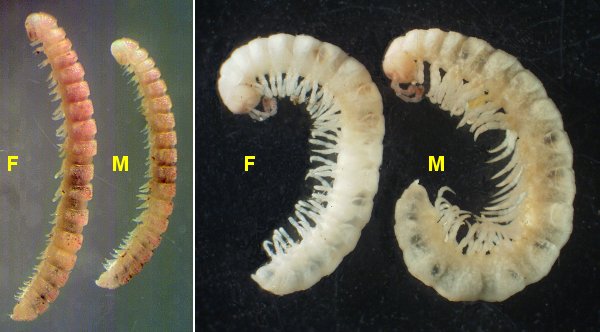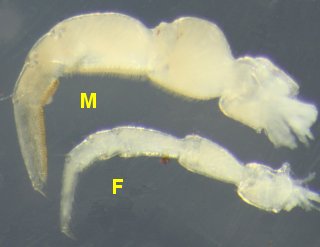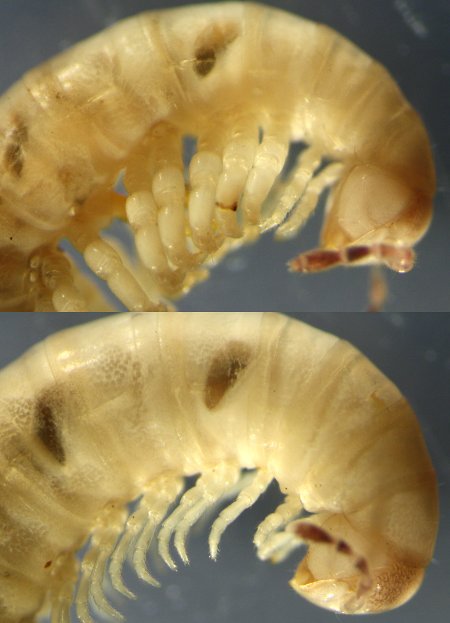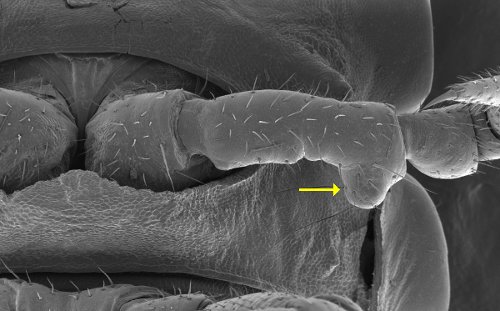Back to: spiracles
Forward to: gonopods
Sex differences
As shown on the growth page, you can tell male from female in any polydesmidan from stadium 4 onwards just by looking at ring 7. There are other differences, but they are not consistent across the whole order Polydesmida.
Relative size
Females are larger than males in many Polydesmida, but not all:

Adult females and males of
(left) Agathodesmus steeli (Haplodesmidae) from New South Wales, Australia
(right) Atrophotergum montanum (Dalodesmidae) from Tasmania
Legs
The anterior legs of adult males are often thicker than those of adult females. The images at right show an adult male (top) and adult female (bottom) of Gasterogramma psi (Dalodesmidae) from Tasmania. In this species the difference in leg thickness is unusually large. The image below shows detached legs 6 from these specimens. Note that the male prefemur (and the femur, but less so) is swollen dorsally.  |
 |
Other
In many species of Polydesmida, males differ from females in having (or lacking) a minor anatomical structure, for example the bump (arrow) in the image below. These minor differences are worth looking for, because they can be useful in identifying or classifying the species.

Adult females of Tasmaniosoma australe (Dalodesmidae) from Tasmania have a large rounded projection on the posterior surface of the distal end of the leg 2 prefemur (arrow). This projection is not present in male T. australe, or in females of the very similar T. warra, which occurs in the same general area.
Minor sexual differences often occur only within a genus. However, there are also family-wide differences between the sexes. For example, adult males of Paradoxosomatidae usually have a tab ventrally between legs 4 on ring 5 (see image at right) with two small gland openings on the tab's posterior surface. The tab is called the sternal lamella, sternal lamina or sternal lobe. Shown: Somethus tasmani, Tasmania. |
 |
Back to: spiracles
Forward to: gonopods
